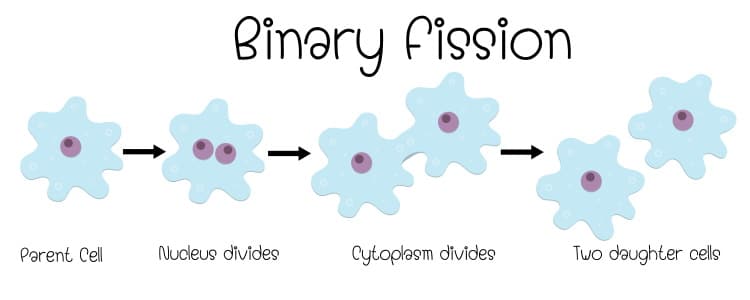
Multiple Fission is found in number of organisms like algae among plants, plasmodium Malaria parasites, Amoeba and monocystis.ĭuring Multiple Fission nucleus of parent divides repeated amitosis into many nuclei, each nucleus takes a bit of cytoplasm and form a daughter cells, some cytoplasm of parental body remain and used and it is residual body. Click the card to flip Definition 1 / 42 chloroplast Click the card. A parent cell creates identical daughter cells through DNA replication and cell division into two equal parts. Binary fission is similar in concept to the mitosis that happens in. Binary fission is the process by which prokaryotic cells split into new cells. is a relatively simple process, compared to mitosis, because binary fission. Bacterial binary fission is the process that bacteria use to carry out cell division. Multiple Fission definition is:- it is that type of asexual mode of reproduction in which the parental body divides into many daughter cells simultaneously during the unfavourable condition to increase the chances of survival of daughter cells, in this reproductive unit is whole parental body. BYJU Binary fission Definition and Examples - Biology Online Prokaryotic. On the basis of plane of cytokinesis the binary fission of three types:- 1)simple binary fission ,2)longitudinal binary fission and 3)transverse binary fission.ġ) simple binary fission:- here cytokinesis may takes place along any plane but its plane is always perpendicular to that of karyokinesis, irregular or simple binary fission seen in amoeba, so nothing is left with parental Amoeba is completely divides into two daughter cell so it is Immortal as it suffers no natural death.Ģ) longitudinal binary fission:- here cytokinesis takes place along the longitudinal Axis for example flagellates like Euglenaģ) transverse binary fission:- here to cytokinesis takes place along transverse Axis for example in ciliated Protozoa like Paramecium. This means that each bacterium cell duplicates its DNA and then divides into two parts, with each new cell. In binary fission the karyokinesis that is division of nucleus is followed by cytokinesis so nothing is left which parent body, daughter cells feed, grow and repeat the process, the organism undergoing binary fission are called Immortal as after binary fission nothing is left with parental body so there is no natural death. Most bacteria reproduce through binary fission. In both prokaryotic and eukaryotic cells, the outcome of cell reproduction is a pair of daughter cells that are genetically identical to the parent cell. One way, some kinds, some unicellular organisms undergo fission in any axis. Another way to classify fission is based on which orientation, along which axis it undergoes fission. Multiple fission is the one where we get multiple offsprings.

For unicellular organisms, cell division is the only method to produce new individuals. Binary fission is the one where we get two offsprings. Differences between binary and Multiple Fission Prokaryotes such as bacteria propagate by binary fission.


 0 kommentar(er)
0 kommentar(er)
